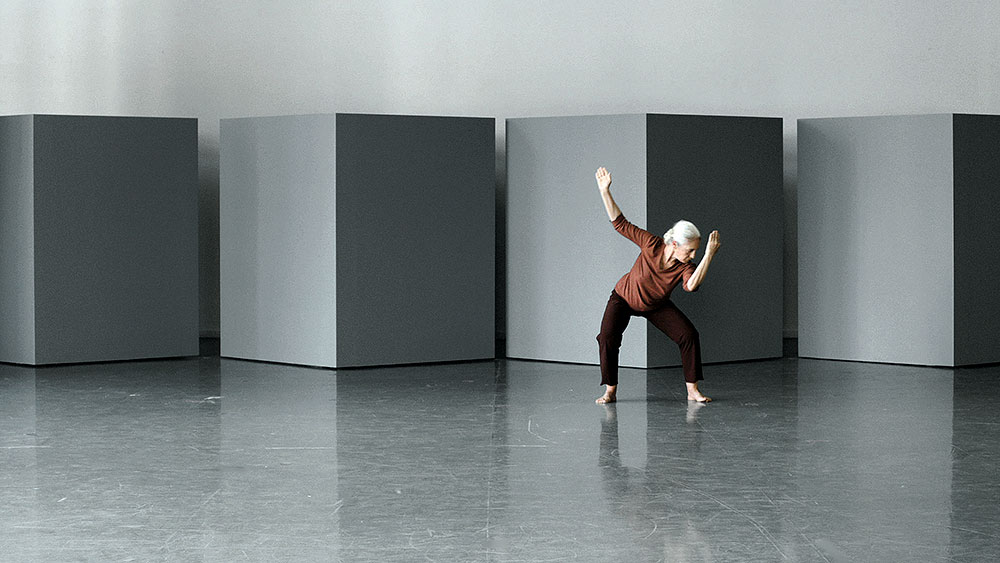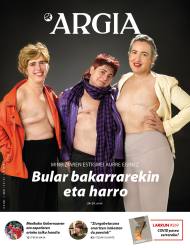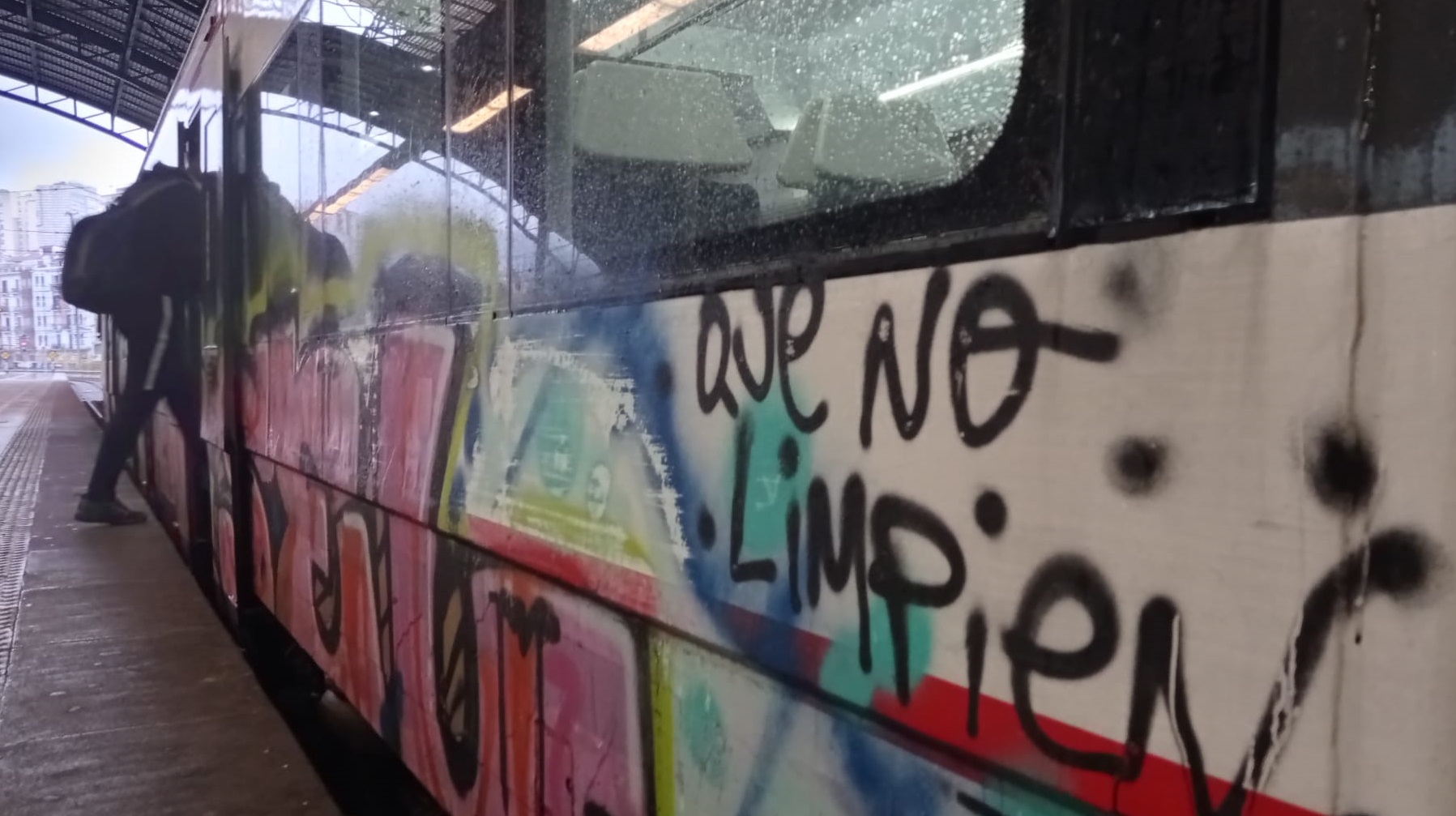Noa Eshkola movement notation through the gaze of Sharon Lockhart
- British photographer and researcher Eadweard Muybridge was a road abrasive to break down the movement. In 1887 he published the book Animal Locomotion, a pioneering book that combines detailed and analytical human and animal movements. Following this research, Israeli dancer and choreographer Noa Eshkol dedicated her life to research the notation of body movement. At present, the result of his work is exposed at the Guggenheim Museum in Bilbao thanks to the research carried out by the artist Sharon Lockhart.

Dancer Noa Eshkol (Kibbutz Degania Bet, 1924-Holon 2007) conducted piano, dance and body culture studies in the USA and Israel. He wanted to bring to dance the notation that is used in music, a writing system to graphically represent musical pieces, in order to develop compositions and combinations of rich and complex body movements. He founded in Israel a dance school that bears his name, whose philosophy was that dance is an art in itself and that, therefore, it must be practiced without scenography, costume and music. They practiced minimal dance in school, paying attention to the movements that the body can produce and writing them. From this study, in the 1950s, together with the architect Avraham Wachman, developed the system: Notation of the Eshkol-Wachman Movement. This system uses the combination of symbols and numbers to define the movement of any member, the basis of the practice of Eshkolen dance.
In 2008, American artist Sharon Lockhart (Norwood, USA, 1964) moved to Israel to make an artistic stay. He found Noa Eshkola's dance school and found his file. In the file lost in oblivion, Eshkola found notations, notes and several wire spheres made for years. Although Eshkol died a year earlier, his students, older and younger generations, continued to practice dance, five days a week and five hours a day, following the strict discipline of his former professor. Lockhart soon understood that he had to do something with the dancers of that school and with the material he found in that file. Lockhart’s artistic practice has always been focused on working with different communities and portraying their experiences and memories. So here I had what I was looking for.
From this experience, in 2011 he carried out the video installation Four Exercises of Motor Notation Eshkol-Wachman, currently visible in the Guggenheim Museum in Bilbao. On a giant screen, we can see four dance exercises each other. In the videos there is a brief scenography in which only one protagonist appears: The dancer Ruti Sela. Sel, a former Eshkolen dance assistant from 1969 until his death, performs in video measured and clean dance movements that serve to give the public a class tutorial.El dancer executes in those short videos all the movements that the human body can make, with an aseptic movement and a stoic gesture, as a programmed machine. The dancer dances between four pieces in the form of a grey cube that make up the scenography, architectural structures that change position from one video to another. In the four videos everything has a measured and lasting dimension.
In addition to the video installation, Lockhart largely printed photographs of the wires spheres he found in Eshkolen's study. Although these circular spheres seem like sculptures, the choreographer used them as a tool for his research, regardless of any artistic function. These were movement maps that used the bodies as devices to locate the axis when they're in motion and to write the movement that comes next. However, Eshkol was not the only notation of dance; some of the most praised figures of international contemporary dance, such as Analivia Cordeiro or Merce Cunningham, also named many of his choreographies with the explicit title “dance notations”.
Given Lockhart's varied and significant artistic production, this project presented in the museum's Film&Video space could be short for the artist's followers, especially because the photographs shown in it were presented in the exhibition Cybernetics of the Poor de Tabakalera in 2020. Lockhart works mainly in film and photography and is a long-standing artist. In 2005, he abandoned the frenzied life of Los Angeles and moved to the mountain of California. At the foot of the Sierra Nevada Mountains he portrayed the children of their villages, taking study photos to make a photo gallery of their children, portraying their games and illustrating how nature changes at each season. With this work, Pine Flat, the artist was invited that year to an individual exhibition in the Rekalde Room in Bilbao, led by Commissioner Chus Martínez.
The relationship it establishes with time in audiovisual pieces and the way it works with the different communities, whether they are workers, gymnasts, adolescents or military, are some of the most important characteristics of its work. Lunch Break (2008) portrays the meal of 42 employees working in a Maine national shipyard. The 35mm film also includes a break to eat and allows workers to see who work in many activities (reading, sleeping, speaking). The No-no Ikebana and Goshogaoka works are also of interest. So let this exposition of the Guggenheim as an excuse to awaken the curiosity – or despair – over the works of Noa Eshkola and Sharon Lockhart.
Behin batean, gazterik, gidoi nagusia betetzea egokitu zitzaion. Elbira Zipitriaren ikasle izanak, ikastolen mugimendu berriarekin bat egin zuen. Irakasle izan zen artisau baino lehen. Gero, eskulturgile. Egun, musika jotzen du, bere gogoz eta bere buruarentzat. Eta beti, eta 35... [+]
This text comes two years later, but the calamities of drunks are like this. A surprising surprise happened in San Fermín Txikito: I met Maite Ciganda Azcarate, an art restorer and friend of a friend. That night he told me that he had been arranging two figures that could be... [+]
On Monday afternoon, I had already planned two documentaries carried out in the Basque Country. I am not particularly fond of documentaries, but Zinemaldia is often a good opportunity to set aside habits and traditions. I decided on the Pello Gutierrez Peñalba Replica a week... [+]
























